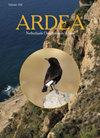鸬鹚和休闲垂钓者是否捕获相同种类和大小的鱼?
IF 1.3
4区 生物学
Q3 ORNITHOLOGY
引用次数: 0
摘要
卡氏大Cormorant Phalacrocorax carbo是一种广泛分布的以鱼类为食的水鸟。休闲垂钓者和Cormorants之间的资源竞争已经引起了运动渔业和环保主义者之间的严重冲突。这项研究旨在比较中欧(捷克共和国)易北河上游Cormorant和休闲垂钓者的捕鱼量。用反流颗粒研究了Cormorant的饮食,并从年度钓鱼报告中获得了垂钓者的捕获量。总共收集了1478个Cormorant颗粒,从中测量并鉴定了6903条鱼。经鉴定,共有93413条鱼被垂钓者捕获。Cormorant的饮食包括六个鱼类科的24种鱼类。与垂钓者捕获的鱼(中值质量1700克)相比,Cormorants捕获的鱼体积较小(中值质量90克)。大多数被Cormorants捕获的鱼都低于垂钓者的最低法定可捕获尺寸。对垂钓者中等兴趣的物种(主要是Roach Rutilus Rutilus)在Cormorant饮食中占主导地位,而普通鲤鱼Cyprinus carpio在垂钓者的渔获量中占主导。总之,垂钓者和Cormorant之间对鱼类的直接竞争似乎很低。然而,由于Cormorant食用的是作为鱼类猎物的小型鱼类,这些鱼类可能会长成合法大小的鱼类用于钓鱼,这仍然允许Cormorant和运动渔业之间的间接竞争。本文章由计算机程序翻译,如有差异,请以英文原文为准。
Do Cormorants and Recreational Anglers Take Fish of the Same Species and Sizes?
The Great Cormorant Phalacrocorax carbo is a widespread piscivorous waterbird. The competition for resources between recreational anglers and Cormorants has been causing serious conflicts between sport fisheries and environmentalists. This study aimed to compare fish catches by Cormorants and by recreational anglers in the upper Elbe River in Central Europe (Czech Republic). Cormorant diet was studied using regurgitated pellets, and catches of anglers were obtained from annual angling reports. Altogether 1478 Cormorant pellets were collected from which 6903 fish were measured and identified to species level. A total of 93,413 fish caught by anglers were identified to species level. Cormorant diet consisted of 24 fish species in six fish families. Cormorants caught smaller-sized fish (median mass 90 g) compared to fish caught by anglers (median mass 1700 g). The majority of fish caught by Cormorants were under the minimum legal catchable size for anglers. Species of moderate interest to anglers (mainly Roach Rutilus rutilus) dominated in Cormorant diets while Common Carp Cyprinus carpio dominated in catches of anglers. In conclusion, the direct competition for fish between anglers and Cormorants appeared low. However, as Cormorants consumed small fish that serve as prey for piscivorous fish species and that could potentially grow into legally sized fish for angling purposes, this still allows for indirect competition between Cormorants and sport fisheries.
求助全文
通过发布文献求助,成功后即可免费获取论文全文。
去求助
来源期刊

Ardea
生物-鸟类学
CiteScore
2.10
自引率
0.00%
发文量
49
审稿时长
>12 weeks
期刊介绍:
Ardea is the scientific journal of the Netherlands Ornithologists'' Union, and is published since 1912. The journal welcomes manuscripts reporting significant new findings in ornithology, in particular those covering the ecology, life history, and evolution of birds, and including sound descriptive work. Ardea publishes Original research papers, Short notes and Book reviews. In addition to the regular three issues per year, Ardea publishes specials that contain conference or workshop proceedings (produced on request).
 求助内容:
求助内容: 应助结果提醒方式:
应助结果提醒方式:


